


TRANSPARENCY OF COLOURS Interview with Rony Plesl
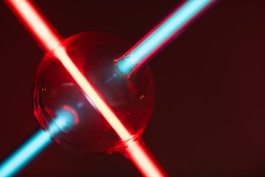
How has the perception of the glass medium changed? Why is the UMPRUM Glass Studio recently closer to fine art than before? And how can post-revolutionary and contemporary foreign exhibitions be understood?
Read the interview with the head of the UMPRUM Glass Studio, which was written for the occasion of the foreign exhibition Transparency of Colors, being held at the GlazenHuis in Lommel, Belgium, until October 9, 2022. The interview conducted by Ján Gajdušek is accompanied by photographs of exhibited works by students, graduates, and teachers of the studio.
JG We meet now, almost four years after the Colors of Transparency exhibition, which took place in 2018 at the London Design Week and comprehensively summarized the work of students and graduates of the glass studio at the Academy of Arts, Architecture and Design in Prague over a few years. I wonder if there has been a certain developmental shift in the studio since then and how it manifested itself?
RP I certainly perceive the shift, although it is difficult to map it now, it is a task for the future. At the same time, I do not want to talk about the studio in the sense that we would be on a straight line and at what stage we are now, I cannot fully assess it. Glass, as a material in the liberal arts, is still in its infancy. Many established approaches still need to be changed in order for glass artists to become respected. The glass community closed in on itself, and everyone admired the craft, they admired the beauty of the glass, but less so the ideas. In order for glass to become an established material, which could even be a concept itself, you can count on the fingers of one or two hands the number of people who have succeeded. I have often thought about it and, when I got the chance, I was very nervous at first, namely to run a glass studio at the Academy of Arts, Architecture and Design in Prague. I, in my personal life, preferred to bring students even closer to the world of design to compete and others from the design studios were not party to this. At first, the students were not competitive in the world of design and could not even apply themselves in free art. This was also due to the fact that Professor Kopecký’s distinctive and phenomenal personality was basically not exceeded by any of them. In a world of design that didn’t teach much, they were completely on their tails. At the time, I thought that I would try to train them in the design area so that they would not take glass only as a separate material, which was only regarded in a certain community, so that they could compete with designers who also used other materials.
As for free art, I didn’t dare go into that field at first, just as I didn’t dare in my personal life. I thought that I prefered to do quality design, which – as I called my professorial lecture Design and felt art should tear your guts – so to rather do “likable” design, which sells well, which is also one of its functions in order to make pleasing sculptures for sale. Over the years, at the same time, artists began to appear organically in the world who partly switched to glass as a creative material. They are, for example, Roni Horn, Tokujin Yoshioka, Hiroshi Sugimoto and several other personalities. Even Ai Weiwei made highquality works of glass, and others began working with it as a concept such as Dahn Vo. They have all shown me the ways that glass can be used in free art, but one must empathize very well with it and not only perceive its beauty, but rather take in hand its basic essence – that it flows and then suddenly solidifies, that it is a natural material that is constantly moving. Gradually, I also gained the courage to work freely with glass and start talking more about it with my students. Some of them, such as Tadeáš Podracký and Lukáš Novák, began to realize the qualities of this material, which can be opulent or decadent, as Matyáš Chochola now proves in that he can even convey the imaginary flag of Czech decadence and surrealism, which is an important moment I gladly stress. Chochola uses glass as a decadent and surrealistic material, Tadeáš Podracký uses it more organically, perhaps even in the Hirst style, which means they understand the material.
At the same time, the word ‘development’ is quite a radical term, because studios are often structured according to the head of the studio, who is a role model for them. If someone is studying with Josef Bolf, Jiří Petrbok or Michal Froňek and Jan Němeček, the pupils sometimes take on the style of their professor, which of course also partially happens with some students in my studio. But I think it’s a bit more complicated with glass than with studios like painting or sculpture, where philosophy, free art, and certain transitions into spiritual values are discussed. In short, the development was not easy and I myself did not dare to do many things, I had to mature. I have been working in the studio for twelve years now, I have done a lot of my own work and the main reason why I still choose to stay at the Academy of Arts, Architecture and Design in Prague is that I could again develop the path of free art in a certain way. I think the studio just needed that development. When working with a sculptural material, such as metal or stone, for thousands of years, it goes without saying. But this is not the case with glass, there was no Michelangelo, no Giotto, there was only Libenský, Vízner and others. And the development has only been within decades, not hundreds of years. There is another problem with glass. In the Czech lands, glass was cared for more by museums than art historians. When it came to art historians, there were some who focused only on glass, but I think that art historians who chronicle the history of free art and look more to the present, must finally start to take an interest in glass.

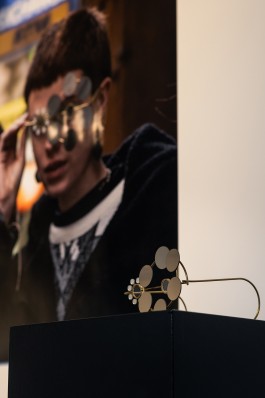
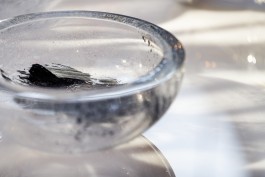
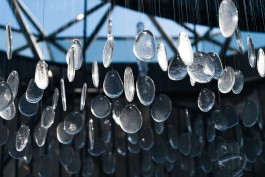
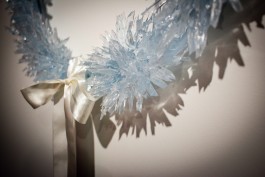
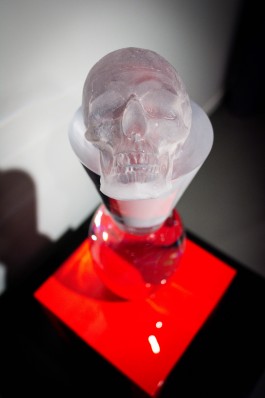
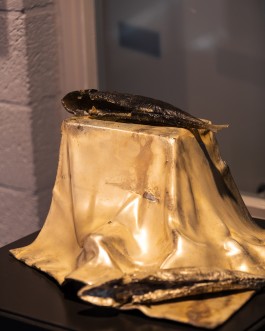
The exhibition at GlazenHuis Lommel. Photo credit: GlazenHuis Lommel
JG I agree that glass should be seen as any other creative material. At the same time, however, it is very difficult for a glass artist who has an education and is used to thinking and moving only in the intentions of design, to detach himself from these approaches and succeed in the world of free art. Conversely, for an artist who is trained in the liberal arts and who comes from an imaginary opposite side, the path seems easier for them. In free art, it can be, for example, Matyáš Chochola, who recently chose glass as a material he uses in his free creation. But I wonder if this is your goal? You have twelve years at the Academy of Arts, Architecture and Design in Prague, which has resulted in several very successful graduates who work for successful design companies such as Lasvit. At the same time, there is now a turn from design to free art within the studio, so I wonder what your vision is, is your goal such that graduates will be able to succeed in the world of free art?
RP You named it very accurately until I was almost startled by how completely different the two worlds were. Of course, I know that it is very difficult for glassmakers to enter the world of free art, and it is much easier for a person who makes free art to start doing glass. Why is it like this? If you want to use glass as a medium and work with it as a freelance artist, then you actually have to completely reset yourself. It’s almost like Christians say, literally a conversion. Christians use this term in the correct sense, because it is related to an absolute and devoted faith in God. A reversal is actually a 180-degree turn, when you start to take everything in your life differently. I understand my conversion to free art as crossing to the other bank, but still traveling along the same river. As such, I don’t give up design at all because it’s a very strong part of my life. At the same time, however, I think that making free art and working with glass is diametrically different than doing design. Even with some of my students who have gone on to do very good work after graduation, I still feel that there isn’t really a story, just visuals in a certain amount of the glassmaking. I also confirmed in myself that the best things I’ve created are mainly those that have a story and, at the same time, it doesn’t matter at all if the pieces are made of glass – so we have the ability to work with another materials.
JG Yes, but I also look at it in such a way that when there is a turnaround, there is still a certain continuity and inertia to the previous events. You have been teaching at the Academy of Arts, Architecture and Design for twelve years, which has had and still has a certain progression. If there is a turnaround in the approach to free art, I believe that it is the task of artists and students to bring a convincing idea and story into their works. So it seems to me that if the approach of free art is applied to the current continuity of the glass studio, which now lies mainly in design, then design can gain a completely different expression and power.
RP You said that well, but we have to add one important thing to this. Everything we are talking about now is happening at the Academy of Arts, Architecture and Design in Prague and yet it is not happening at the academy. This means that individual responsibility plays a crucial role here. My responsibility, like everyone else who runs our studio, is to educate people who will be valid primarily in their own lives and for themselves, but also for society, for companies cultivating brands, etc. You said a very important thing that plays a significant role in why I dare to go into free art – because the more we talk about free art, the better design we will do. I am a big supporter of free art in the form of the sculpture, painting, etc. studios at the Academy of Arts, Architecture and Design in Prague, because if part of the world admires our school, it is because design is created here that is influenced by these free studios.
I think that philosophical lectures, discussions about the meaning of life, etc. enrich a person. I read a book of interviews with Josef Pleskot, who now works the architecture part of my exhibition for the Venice Biennale, and Josef Pleskot is constantly there, as an architect, talking about connecting everything he does with everyday life. This means that when he is given the task of building a bank, he first examines the terrain contours and footpaths on the plot. He looks at where people went, what they planted there, where there is a depression or a stone. From Josef Pleskot, I understood the curse of having a certain humility to do something truly spiritual. When he draws the composition of my sculptures in a church in Venice, it is not a design or architectural composition. This composition is based on the knowledge of Palladian squares and spherical cubes.
I believe that what we are talking about now means that we are on the right track. That we don’t look at glass now as though we have to prove something, that we have to dazzle someone. We look at a certain essence – where were the paths, where were the nooks and crannies. And why did Roni Horn produce such good glass pieces? Not because she wants to create dazzling glass, but, because she lives part-time in Iceland, she is a conceptualist, an excellent artist, she has excellent photos, she is simply a complete artist in her own right. But suddenly she grasped the medium of glass because it fit perfectly into her artistic concept and she was looking for a glassworks that would create a hot Icelandic spring.
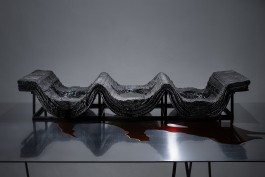

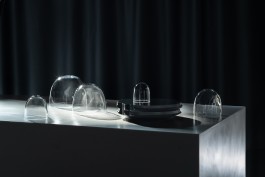

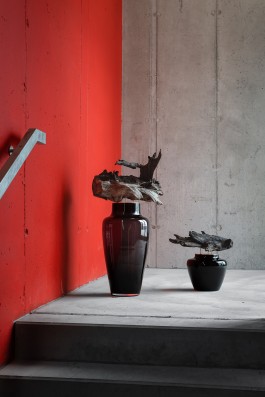

Emma Balcarová, Ritual Bowls: Water and Fire, Prague, 2021. Hand-blown glass, enameled. Photo credit: Tomáš Slavík
Sabina Falcmanová, Mirror of our Time, Prague, 2022. Asphalt strip, crude oil, metal construction. Photo credit: Tomáš Slavík
Anna Jožová, Kairo, Prague, 2022. Hand-blown glass. Photo credit: Tomáš Slavík
František Jungvirt, Gin Bottles for Jíme Jih, Prague, 2021. Hand-blown glass, cold-worked. Photo credit: Tomáš Slavík
Tomáš Kučera, Ceremony, Prague, 2021. Kiln-cast black glass, hand-blown glass. Photo credit: Tomáš Slavík
Eliška Monsportová, Fragrant Vases for a niche brand Scent Roché, Prague, 2021. Hand-blown glass, plated polished steel, tanned wood. Photo credit: Tomáš Slavík
JG If we look at history, this approach follows a certain development within the studio itself. When I read what pedagogical-artistic procedures were applied within the studio by professors Josef Kaplický, Stanislav Libenský and Vladimír Kopecký, it became clear that, even though it is the Academy of Arts, Architecture and Design in Prague, there was a clear inclination towards free art in their studios. Nevertheless, a number of graduates worked as designers in state glassworks. The current approach that you are beginning to take in the studio is going the other way, from design to free art. At the same time, when it comes to graduates, I perceive that in the reality of today’s world we find ourselves in a situation that is mainly about the individual ability to assert themselves in a highly competitive artistic environment. Therefore, in my opinion, moving through the boundaries of free art and design and the ability to function practically in both of these worlds is crucial.
RP Yes, but it’s more complicated. Libenský and Kaplický did mostly free art, this is not so true for Kaplický, because the time was different, but Kopecký’s graduates in free art started to do design. But you can’t make it such a simple rule. I realized when I was pursuing design that, for example, there is a certain tradition to chandelier trimmings, such as Christian; it can have the floor plan of a cathedral or old French wallpaper. I used to use a lot of sacred design, which helped me a lot. For example, if you take a cup, as the designers say, to serve well for drinking, then of course it’s nice, it’s a matter of design. But when you take a challace in a church or a monstrance, there is a design that is elevated to something that isn’t necessarily good for drinking anymore, but it does evoke a certain emotion that is supposed to bring people knowledge of God or one of the Bible stories, which means that even these things have a soul, and yet it is still a design.
We have brought up a lot of successful designers in the glass studio and we have also managed to create a certain shape and emotional culture, and I think it’s time to start talking more about whether one of the best ideas could be to get into the collections of collectors who are focused on free art. At the same time, there are a lot of collectors and I have heard this notion many times within institutions that do not yet have an opinion on glass and do not focus on it, which is actually absurd. I gained some confidence in my free creation when collectors bought my works and put them alongside the works of Josef Bolf or Federico Díaz. At that moment, I thought that maybe I should try to continue.
JG This interview and catalog will be published on the occasion of a foreign exhibition in Belgium. In the post-revolutionary development, how do you perceive the participation of Czech glass artists in foreign shows? It seems to me that there is a paradox, because glass artists and designers often present their works at various international shows, but the vast majority are design fairs. On the other hand, Czech freelance artists are not doing so well.
RP It’s very important where it works, in what gallery and in what country. I think we are a very capable nation, we have a lot of capable artists, but, in general, and what you say is probably related to the fact that we are a small nation, we overestimate some things and underestimate others. Here in the Czech Republic, in general, and this is not just about design and free art, a certain hierarchy is not correctly perceived, e.g. when someone gets an award somewhere, it presents the piece itself as a success, but then no one examines what the competition was like, where it was, what the gallery was like. Conversely, some really top things may fit certain venues completely. I personally try to be aware of this and wait for the right opportunity. Which is the alpha and omega of what you’re asking for, success. At the same time, I would not exaggerate too much that Czech design is thriving abroad, I think that in art it is actually quite similar and it is more important where it is. Similarly, I urge my students to wait for the right chance. Nevertheless, I also exhibited everywhere at first, but I always tried to go to the highest goal I had at that moment, or I felt that I had it.
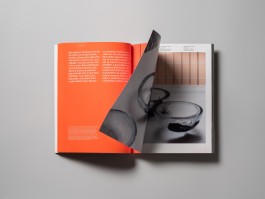

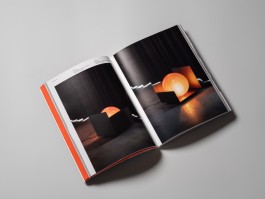
Transparency of Colours Catalogue. Photo credit: Tomáš Slavík
JG How do you perceive the dedication of your students after graduation and how important is it for you to resolve this subsequent application during their studies?
RP Our graduates are now more employed than before. But that doesn’t mean they’re better. In short, they apply themselves because I lead them that way because, for me, the real goal is for them to realize themselves. I don’t bother that there are several of them in Lasvit and others successfully making a living in freelance design. I’m glad that almost no one does bad things and they work very well at a certain level. I even think that even if we try our best, the top ones will always be the same. And it doesn’t matter if it’s Kopecký, Libenský or Plesl. It’s important that the whole thing is of a better quality in a way, and I think that’s happening. At the same time, I dare say that we are really doing well now. Of course time can also contribute and there is more competition here now.
JG UMPRUM has now significantly expanded into the new Technology Center on Mikulandská Street in Prague. Do you feel that this is a qualitative shift that will allow students to try everything even more, with the proviso that this change could have an overlap into the future in that graduates will be more capable in practice?
RP I honestly don’t know yet how far it will affect the future, I can’t judge it now. Probably it will in some fields, such as industrial design, such as screwdrivers or cars. The fluidity of the old UMPRUM, where the workshops in the cellar were in terrible condition, is also disappearing, but, at the same time, there was a specific atmosphere that greatly aided a certain quality of thought. It is believed that one of the best schools of art and design in the world is ECAL in Switzerland, which even has a studio called Luxury Design, which is the only studio that pays there. And there is huge money flowing there, for example, from the Nestlé Group, and it can be seen that even this money and strong background really play a role. But of course it is not self-saving. I think it may help, but it depends on many other factors – who is in charge of the school, who comprises the faculty and the overall composition of the people there. In short, it’s not just the workshops and the building. So it can certainly play a positive role, but it has more to do with other things.
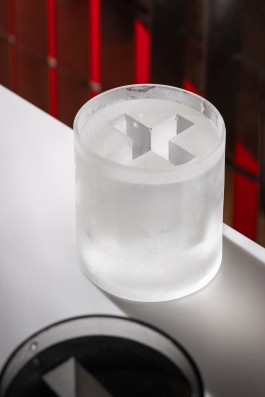
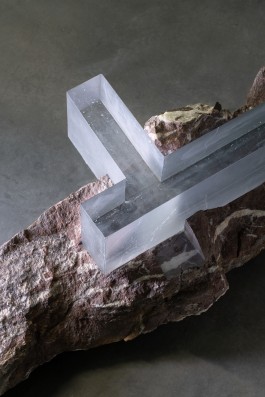
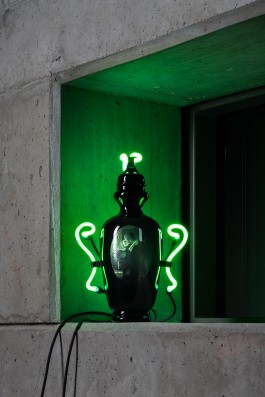
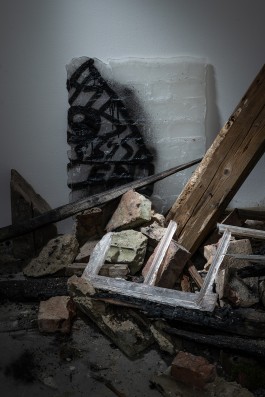
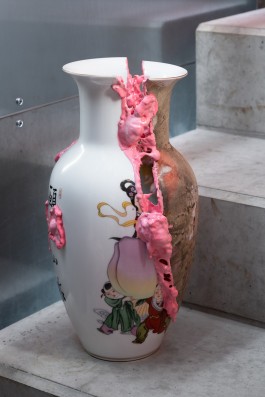
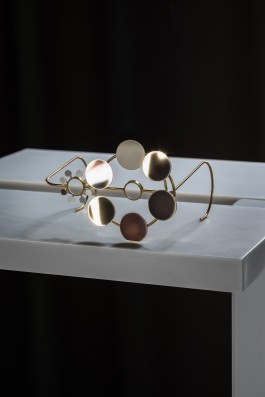
Anežka Müllerová, Shot Glasses + −, Prague, 2021. Kiln-cast glass. Photo credit: Tomáš Slavík
Johan Pertl, Monument, Prague, 2021. Kiln-cast glass, marble. Photo credit: Tomáš Slavík
Dominika Petrtýlová, Party Vases, Prague, 2019. Hand-blown glass, neon; enameled. Photo credit: Tomáš Slavík
Vilém Smejkal, 50.773093, 14.467839, Prague, 2021. Kiln-cast glass, rubble, graffiti. Photo credit: Tomáš Slavík
Karolína Vorlíková, Post-party Vases, Prague, 2019. Glass, ceramics, foam, epoxy resin. Photo credit: Tomáš Slavík
Byoungchan Yun, The Labyrinth of the World and the Paradise of the Heart, Prague, 2019. Glass, mirrors, brass. Photo credit: David Otruba and Tomáš Slavík
JG Is it inspiring for you how the teaching at some of the top foreign schools has become part of your own teaching?
RP Yes, but for me it’s mainly an inspiring lifestyle only in certain countries. This is something that I try to build on a lot in that studio – which I mentioned a moment ago in connection with Josef Pleskot – and that is that the work itself is not and must not be detached from life. I try to look to France, Italy and other countries a lot because there is a certain nobility and difficulty there. It’s good to see how these people dress, how they behave, how they talk, where they travel, what they read. I think this is also important for creation. At the same time, students can certainly be solitaires who will imagine the land and be isolated, but of course this is not a studio program. On the contrary, the studio’s program is for everyone to travel, to get to know each other, to be demanding. Of course, I follow foreign schools, but mostly not with the admiration of the type that they are better or have better conditions, but I rather think about other contexts. I care that students taste good prosciutto and whenever there is any party, I try to bring the best that can be bought, to just know that Franciacorta is better than Prosecco and champagne is better than Franciacorta, to know that they prefer ten blanket prosciutto than a pound of ground meat.
JG A few years ago, I read a small, small book written by Josef Kaplický, called Records, which was comprised of his articles and lectures on various topics, and one of them is about the culture of France. Kaplický was a great lover of French culture and tried to pass it on to his students in a certain way, which was, I think, admirable at the time.
RP When students had a big say in schools after the revolution, I was on a committee that co-selected new professors at the Academy of Arts, Architecture and Design in Prague. Dr. Jiří Šetlík was sitting next to me at the time and I was enthusiastic about some very strong personalities who reported to the management of the studios, and Šetlík leaned over and said to me: Am I saying this now because I really don’t think it’s a good idea to fool students in the sense that only I, as a professor, should lead by example. I believe that it is better, especially for a larger number of students, to direct them to a certain culture, maturation, reading, that this is more meaningful and that the results are better. I don’t want to be an idol for students, I want a certain lifestyle, culture and joy to be the goal for them.
JG I’m interested in your answer now as a professor and an artist as an active creator. When Josip Plečnik was called to Czechoslovakia, he came here as a famous architect with realizations, for example in Vienna. However, when Plečnik started lecturing at the Academy of Arts, Architecture and Design in Prague, where he worked for about ten years, he completely gave up his work in favor of teaching at the school. On the contrary, there are examples of professors who, as part of their studio management, have given priority to their work over teaching students. How do you see this?
RP I see this in connection with Professor Kopecký, who was an idol for many of his students, and some of them then started creating like him. On the other hand, Stanislav Libenský was even influenced by students, especially Jaroslav Róna, in the form of expressive heads. So it could be said that Libenský, on the other hand, only grew up at the Academy of Arts, Architecture and Design in Prague, he himself influenced students as a professor, but at the same time he was influenced by them to a certain extent. In short, the approaches are always very individual and you can’t say what’s best. And this, in turn, has to do with what we are aiming for all the time, that it is important to map and realize all of the contexts if one wants and has the opportunity to do so. When it comes to learning about our personal lives and our personal work, it doesn’t matter, in quotes, it’s just our business, but if the educator takes teaching really responsibly to educate someone, he has to think about it carefully. And, of course, there are negative examples of people who gave almost nothing to their students and wasted everything. I really try to pay attention to it and balance my work with consistent teaching in the studio.
Profesor Rony Plesl (*1965) joined the Academy of Arts Architecture and Design in Prague in 2008 as the new head of the Studio of Glass after eighteen years of Professor Vladimír Kopecký’s tenure. At that time, a new team was created at the school, initially with sculptor and publicist Pavel Karous as assistant professor. He was succeeded by Klára Horáčková, a glass artist and graduate of Vladimír Kopecký’s studio, who originally worked in the studio as a head of the workshop. As part of the opening of the new Mikulandská Technology Centre in 2021, the studio’s workshops moved to the new building and with them the workshop masters Ivan Pokorný, who is in charge of melting and all hot glass technologies, and Alena Hájková, who manages the cold part of the workshop (grinding, engraving, sandblasting, drilling, etc.) and who replaced the legendary workshop master Antonín Votruba after more than forty years at the school.
Ján Gajdušek (*1987) graduated with a bachelor's degree in international relations from the University of New York in Prague and is currently a master's student in Theory and History of Modern and Contemporary Art at UMPRUM in Prague. He is involved in exhibition projects mapping contemporary art, since 2016 he has been the curator of the private art collection Havrlant Art Collection, and since 2020 he has been the curator of the Holešovická Šachta gallery. He cooperates with the Museum of the City of Brno on a regular exhibition cycle focused on Czech glass.